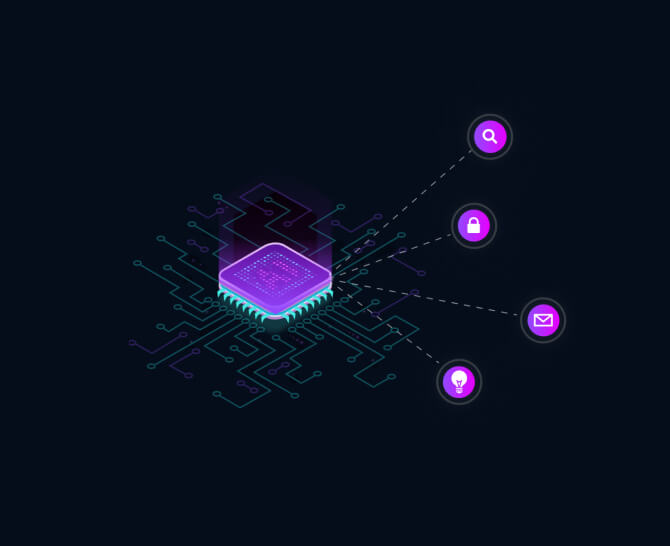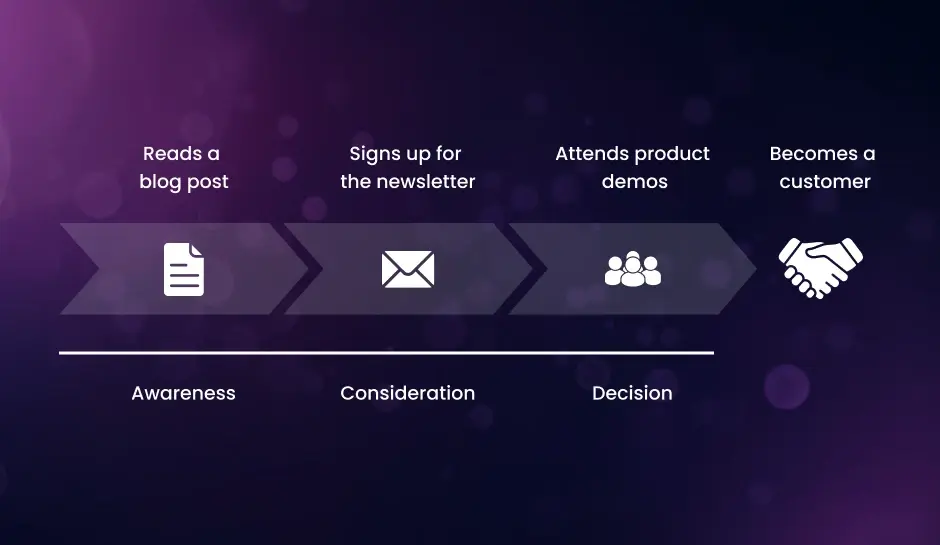
Unraveling the Power of AI and ML in Marketing Attribution
With the increase in cookie restrictions and tracking limitations, accurately attributing conversions has become difficult. With AI and ML added to the marketing attribution mix, marketers can analyze vast amounts of data, including all customer interactions with a website, to accurately attribute value to marketing campaigns and channels. In this blog post, we have covered why AI and ML are the game-changers that enable marketers to thrive and achieve outstanding ROI.
Gone are the days of guesswork and hunches in marketing, and more specifically, marketing attribution. Artificial Intelligence and Machine Learning have revolutionized marketing attribution by providing advanced analytics and insights that were previously unattainable.
With AI and ML on their Marketing teams, marketers no longer have to shoot in the dark with their marketing efforts. They’re armed with data-driven insights to impact business outcomes seriously.
In this blog post, we will explore how AI and ML are shaping the game of marketing attribution and how machine learning can be used in marketing attribution. Let’s dive in!
Why Add AI and ML to the Marketing Attribution Mix?
In the ever-evolving marketing world, the challenges of accurately attributing conversions to the right campaigns and channels are growing more complex. Traditional marketing attribution methods often rely on limited data sources and subjective interpretations. However, with AI-driven marketing attribution, businesses can unlock a world of possibilities and overcome the obstacles posed by cookie restrictions and tracking limitations. Let’s explore in detail why adding AI and ML is the key to unraveling the mysteries of the machine learning marketing attribution model. We will also discuss how machine learning approaches can be used in marketing attribution.
Analyzing Vast Amounts of Data
In the vast ocean of data, filled with customer interactions, touchpoints, and valuable insights. AI and machine learning marketing attribution act as powerful navigators in this sea of information, enabling businesses to analyze large volumes of data quickly and accurately. Traditional methods may need help to handle the sheer magnitude and complexity of modern marketing data, but AI-driven marketing attribution excels in processing and extracting valuable patterns and insights. By embracing these technologies, businesses can explore every nook and cranny of customer interactions, unraveling the true story behind conversions.
Unveiling Hidden Touchpoints
When it comes to customer journeys, many touch points often remain hidden in plain sight. Traditional marketing attribution approaches may miss these touchpoints, leaving businesses with an incomplete understanding of the customer’s path to conversion. However, using AI for marketing attribution modeling can capture and analyze every customer interaction with a website. They reveal and bring the previously unseen touchpoints into the light, allowing marketers to accurately attribute value to each touchpoint and understand their contribution to conversions. Uncovering these hidden gems allows businesses to optimize their marketing strategies and allocate resources effectively.
Dynamic and Real-Time Insights
In the whimsical marketing realm, where trends shift, and customer behaviors evolve, static and outdated insights can lead businesses astray. AI-generated marketing attribution acts as an all-seeing entity, constantly learning and adapting to changing circumstances. These technologies can analyze real-time data, providing up-to-date insights into the effectiveness of marketing campaigns and channels. By embracing AI and ML, businesses gain the agility to adapt their strategies promptly, seizing opportunities and mitigating risks in the ever-changing marketing landscape.
Complex Pattern Recognition
Machine learning marketing attribution possesses the ability to discern complex patterns within marketing data. Traditional methods often need help to unravel the intricate relationships and dependencies between touchpoints, campaigns, and channels. However, AI and ML algorithms excel at identifying hidden patterns and correlations that contribute to conversions. By understanding these interconnections, businesses can optimize their marketing mix, allocating resources where they have the greatest impact and eliminating inefficiencies.
Personalized and Targeted Marketing
Personalization is the elixir that captures the hearts and minds of customers. AI and ML unleash the power of personalization by analyzing vast amounts of customer data and generating actionable insights. These technologies can identify individual preferences, predict future behavior, and tailor marketing messages accordingly. By leveraging machine learning marketing attribution models, businesses can create highly targeted campaigns that resonate with their audience, driving engagement and increasing conversion rates.
Automation and Efficiency
In marketing and life, time is a precious commodity. Traditional attribution methods often require manual data analysis, which can be time-consuming and prone to errors. AI for marketing attribution modeling works like a magical automation companion can automate repetitive tasks, data processing, and analysis. By harnessing the power of automation, marketers can focus their energy on strategic decision-making, creative endeavors, and crafting compelling campaigns. This automation improves efficiency and frees up valuable time for marketers to experiment, innovate, and nurture meaningful customer relationships.
By adding AI and ML to the marketing attribution mix, businesses can transform their marketing strategies, unravel the complexities of customer journeys, and unlock valuable insights. These technologies empower marketers to navigate the challenges posed by cookie restrictions and tracking limitations, ensuring accurate attribution and optimization of marketing efforts for lead attribution with AI. In this realm of marketing magic, AI and ML stand as powerful allies, providing businesses with the tools they need to succeed in a data-driven world.
Benefits of Marketing Attribution – Powered by AI & ML
So far, we got to know how machine learning can be used for marketing attribution. We have also learnt how marketers can unravel the mysteries behind customer behavior,optimize their strategies, and maximize their ROI leveraging AI and ML. Here are some notable benefits of adding AI and ML to your marketing attribution mix:
Precise and Accurate Attribution
Traditional attribution models often need to capture complex interactions between marketing touchpoints. However, AI driven marketing attribution offers sophisticated algorithms that can attribute credit accurately to each touchpoint based on its actual impact on conversions. By adopting multi-touch attribution models, marketers gain a comprehensive view of the customer journey. It leads to a clearer understanding of which marketing efforts drive results, allowing for more informed decision-making.
- Enhanced Customer Journey Mapping
- Improved Budget Allocation
- Personalized Customer Experiences
- Real-time Insights for Agility
- Reduction of Marketing Waste
- Seamless Integration of Multiple Channels
AI and ML open up new dimensions of customer journey mapping by analyzing vast amounts of data from various channels. With these insights, marketers can identify customer touchpoints across different stages of the buying process. By understanding how customers interact with the brand at each stage, marketers can create more targeted and personalized campaigns, resulting in improved customer experiences and higher engagement rates.
Optimizing marketing budgets is a perpetual challenge for marketers. AI and ML can be savvy financial advisors by analyzing data and recommending optimal budget allocations across various marketing channels. Businesses can achieve better results and maximize their marketing ROI by reallocating resources to the most effective channels.
AI and ML are the architects of personalized experiences, enabling marketers to deliver tailored content, offers, and recommendations to individual customers. By understanding customer preferences and behavior, marketers can predict the next best action for each customer, fostering stronger connections and increasing customer loyalty.
Real-time insights are invaluable for agile marketing strategies in the dynamic digital landscape. Machine learning marketing attribution process data rapidly and continuously learn from new information, enabling marketers to adapt their campaigns in real-time. By staying ahead of trends and responding swiftly to market changes, businesses can remain competitive and capitalize on emerging opportunities.
Every marketer dreads investing resources in campaigns that yield minimal results. AI and ML identify underperforming touchpoints and campaigns, allowing businesses to minimize marketing waste. Marketers can redirect their efforts toward initiatives that generate higher conversion rates and stronger customer engagement by cutting back on ineffective strategies.
Today, customers engage with brands through various platforms and devices. AI and ML can integrate data from these disparate sources, offering a holistic view of the customer journey. This integration enables marketers to identify cross-channel synergies, allowing them to create cohesive and impactful marketing strategies and lead attribution with AI.
Conclusion
AI and ML have revolutionized marketing attribution, elevating it from a rudimentary process to an intricate science. By embracing these transformative technologies, businesses can gain a competitive edge, unleash the potential of their marketing efforts, and forge stronger relationships with their customers. So, it’s time to harness the power of AI and ML in marketing attribution and embark on a journey of data-driven success!
Ready to Unlock the Full Potential of Attribution With the Power of AI and ML? Let’s Talk!
Our marketing analytics experts would love to pitch in. Just send us an email at info@diggrowth.com and we’ll get back to you.
Ready to get started?
Increase your marketing ROI by 30% with custom dashboards & reports that present a clear picture of marketing effectiveness
Start Free Trial
Experience Premium Marketing Analytics At Budget-Friendly Pricing.

Learn how you can accurately measure return on marketing investment.
Additional Resources
The Future of Marketing: How Predictive Lead and Account Scoring is Changing the Game
Can we, in this incredible marketing landscape driven...
Read full post postCloud Wars: A Comparative Analysis of Leading Cloud Vendors
How many companies are using cloud computing? Around...
Read full post postContent Marketing Attribution: Tracking Content Impact Across the Customer Journey
So, you've poured your heart into crafting the...
Read full post post Manreet Khara
Manreet Khara 

